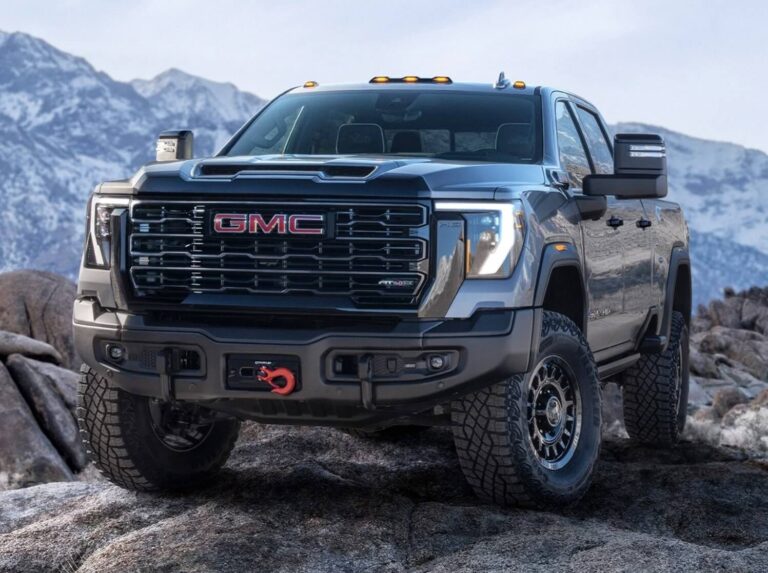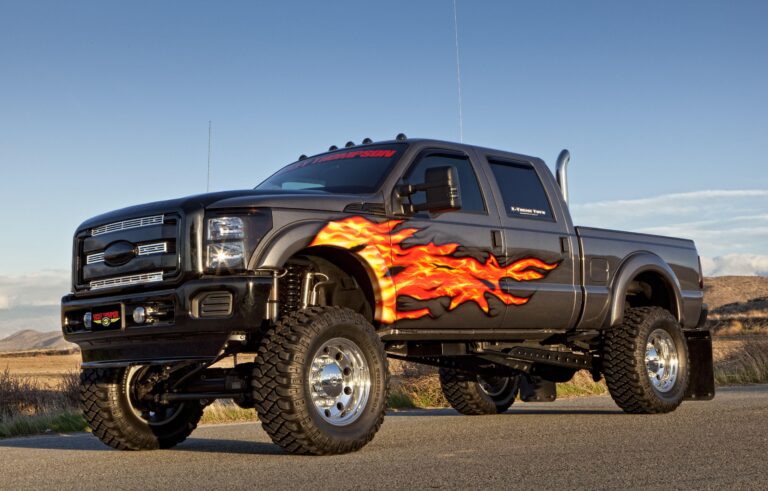List Of Truck Parts Names: Your Comprehensive Guide to the Anatomy of a Truck
List Of Truck Parts Names: Your Comprehensive Guide to the Anatomy of a Truck cars.truckstrend.com
The roar of an engine, the sheer power of a heavy load, the endless miles conquered – trucks are engineering marvels that form the backbone of global commerce and transportation. From colossal semi-trucks hauling goods across continents to robust dump trucks shaping construction sites, these vehicles are complex machines composed of thousands of individual parts working in precise harmony. For owners, operators, mechanics, and even curious enthusiasts, understanding the "List Of Truck Parts Names" is not just about vocabulary; it’s fundamental to maintenance, repair, safety, and ultimately, the efficient operation of these indispensable giants.
This comprehensive guide aims to demystify the intricate world of truck components. We will embark on a journey through the various systems of a truck, naming and explaining the purpose of its key parts. Whether you’re looking to troubleshoot a problem, order a replacement part, or simply expand your mechanical knowledge, having a clear understanding of these components is your first step towards mastering the truck’s anatomy.
List Of Truck Parts Names: Your Comprehensive Guide to the Anatomy of a Truck
Why Knowing Truck Part Names Matters
Beyond the obvious benefit of communicating effectively with mechanics or parts suppliers, a solid grasp of truck part names offers several critical advantages:
- Efficient Troubleshooting: When a problem arises, being able to accurately identify the malfunctioning component speeds up diagnosis and repair.
- Cost Savings: Knowing what part you need prevents unnecessary purchases or incorrect repairs. It also empowers you to compare prices and quality more effectively.
- Enhanced Safety: Regular inspections require you to identify parts that might be worn or damaged, directly contributing to road safety.
- Empowered Maintenance: Understanding the function of each part helps you appreciate the importance of preventive maintenance schedules and actions.
- Informed Decisions: Whether buying a new truck, assessing a used one, or planning upgrades, knowledge of components allows for more informed decision-making.

Dissecting the Beast: Key Systems and Their Components
Trucks are typically divided into several major systems, each with its own specialized components. Let’s break them down:
1. The Heart of the Truck: Engine & Powertrain Components
The engine is the power source, and the powertrain transmits that power to the wheels. This system is arguably the most complex and critical.

- Engine Block: The main structure housing the cylinders, pistons, and crankshaft.
- Cylinder Head: Sits atop the engine block, containing valves, camshafts (in overhead cam designs), and combustion chambers.
- Pistons: Move up and down within the cylinders, converting combustion into mechanical energy.
- Crankshaft: Converts the reciprocating motion of the pistons into rotational motion.
- Camshaft: Controls the opening and closing of the engine’s intake and exhaust valves.
- Turbocharger/Supercharger: Forces more air into the engine, increasing power and efficiency.
- Fuel Injectors: Atomize and spray fuel into the combustion chambers.
- Radiator: Dissipates heat from the engine’s coolant.
- Water Pump: Circulates coolant through the engine and radiator.
- Oil Pan: Reservoir for engine oil.
- Oil Pump: Circulates oil to lubricate engine components.
- Exhaust Manifold: Collects exhaust gases from the cylinders.
- DPF (Diesel Particulate Filter) / SCR (Selective Catalytic Reduction): Emissions control components.
- Transmission (Manual/Automatic): Changes gear ratios to match engine speed to road speed and load.
- Clutch (Manual): Disengages power from the engine to the transmission for gear changes.
- Driveshaft (Propeller Shaft): Transmits power from the transmission to the differential.
- Differential: Allows the drive wheels to rotate at different speeds when turning.
- Axles (Drive Axles): Bear the weight of the truck and transfer power to the wheels.

2. The Skeleton and Suspension: Chassis & Running Gear
This system provides the structural support and connects the wheels to the frame, ensuring stability and ride comfort.
- Frame Rails: The main longitudinal beams that form the backbone of the truck’s chassis.
- Crossmembers: Connect the frame rails, adding rigidity.
- Axles (Steering Axle, Drive Axles, Tag Axles): Support the weight and provide points for wheels.
- Leaf Springs: Traditional suspension components consisting of stacked metal leaves.
- Air Springs (Air Bags): Inflatable rubber bags that provide a smoother ride and adjustable suspension height.
- Shock Absorbers (Dampers): Control spring oscillations and absorb bumps.
- Steering Gearbox (Steering Box): Converts the rotational motion of the steering wheel into linear motion to move the steering linkage.
- Tie Rods: Connect the steering gearbox to the steering knuckles.
- Kingpins (Older Designs) / Ball Joints (Newer Designs): Pivots that allow the wheels to turn.
- Wheel Hubs: Mount the wheels to the axles.
- Rims/Wheels: The metal structure to which tires are mounted.
- Tires: Provide traction and absorb road irregularities.
3. Stopping Power: Braking System Components
Crucial for safety, the braking system uses air pressure to stop the massive weight of a truck.
- Air Compressor: Generates compressed air for the braking system.
- Air Tanks (Reservoirs): Store compressed air.
- Air Dryer: Removes moisture from the compressed air to prevent freezing and corrosion.
- Brake Lines (Air Lines): Hoses and tubes that carry compressed air to the brake chambers.
- Brake Chambers: Convert air pressure into mechanical force to apply the brakes.
- Slack Adjusters (Manual/Automatic): Adjust the distance the brake shoes/pads need to travel to contact the drum/rotor.
- Brake Shoes/Pads: Friction material that presses against the brake drum/rotor.
- Brake Drums/Rotors: The rotating components against which the shoes/pads press.
- ABS Sensors (Anti-lock Braking System): Monitor wheel speed to prevent lock-up during braking.
- Brake Valves (Foot Valve, Hand Valve, Relay Valve): Control the flow of air to the brake chambers.
4. The Nerves and Senses: Electrical & Lighting System
This system powers everything from the engine’s ignition to the cabin’s creature comforts and crucial safety lights.
- Battery: Stores electrical energy to start the engine and power accessories when the engine is off.
- Alternator: Recharges the battery and powers electrical components when the engine is running.
- Starter Motor: Engages the engine’s flywheel to crank the engine and start it.
- Wiring Harness: Bundles of wires that transmit electrical signals and power throughout the truck.
- ECM (Engine Control Module) / ECU (Electronic Control Unit): The "brain" of the truck, controlling engine functions, emissions, and other systems.
- Headlights, Taillights, Marker Lights, Turn Signals: Essential for visibility and communication.
- Fuses & Relays: Protect electrical circuits from overcurrents.
- Dashboard Gauges & Displays: Provide vital information to the driver (speed, RPM, oil pressure, temperature, etc.).
5. The Driver’s Command Center: Cabin & Interior Components
Where the driver spends countless hours, comfort, ergonomics, and accessibility are key.
- Seats (Driver’s Seat, Passenger Seat): Often air-ride suspension for comfort.
- Dashboard: Houses gauges, controls, and infotainment systems.
- Steering Wheel: For directing the truck.
- Pedals (Accelerator, Brake, Clutch): For control inputs.
- HVAC System (Heating, Ventilation, Air Conditioning): Maintains cabin temperature.
- Sleeper Berth: For long-haul drivers, includes bed, storage, and sometimes amenities.
- Door Panels, Interior Trim: Aesthetic and functional components.
6. The Outer Shell: Body & Exterior Parts
These components provide protection, aerodynamics, and contribute to the truck’s overall appearance.
- Hood: Covers the engine compartment.
- Fenders: Cover the wheels, protecting against road debris.
- Grille: Front-end component, often housing the radiator and allowing airflow.
- Bumper (Front/Rear): Impact absorption.
- Mirrors (Side Mirrors, Convex Mirrors): Provide visibility.
- Fuel Tanks: Store diesel fuel.
- Exhaust System (Muffler, Tailpipe): Channels and quiets exhaust gases.
- Mud Flaps: Prevent debris from being thrown by the tires.
- Fairings (Side Skirts, Roof Fairings): Aerodynamic components to reduce drag.
7. Connecting to the Load: Trailer & Fifth Wheel Components (for Semi-Trucks)
Specific to semi-trucks, these parts facilitate coupling with a trailer.
- Fifth Wheel: The coupling device on the tractor that connects to the trailer’s kingpin.
- Kingpin: The pin on the trailer that locks into the fifth wheel.
- Gladhands: Connect air lines from the tractor to the trailer for brakes.
- Pigtail (Electrical Cable): Connects the tractor’s electrical system to the trailer’s lights and ABS.
Practical Advice for Navigating Truck Parts
- Consult Your Manual: Your truck’s owner’s manual and service manual are invaluable resources for identifying specific parts, their functions, and recommended maintenance.
- Understand Part Numbers: Most manufacturers use unique part numbers. Always provide these when ordering to ensure you get the correct component. VIN (Vehicle Identification Number) is also crucial.
- OEM vs. Aftermarket:
- OEM (Original Equipment Manufacturer): Parts made by the truck’s original manufacturer. Generally higher quality and perfect fit, but more expensive.
- Aftermarket: Parts made by other companies. Can be more affordable, but quality varies. Research reputable brands.
- Visual Inspections: Regularly inspect accessible parts for signs of wear, cracks, leaks, or damage. Early detection can prevent major failures.
- Online Resources & Diagrams: Many online parts catalogs and forums offer detailed diagrams and exploded views of truck systems, which can be immensely helpful for identification.
Challenges and Solutions
- Part Obsolescence: Older trucks might have parts that are no longer manufactured. Solution: Seek out specialty suppliers, salvage yards, or consider custom fabrication where feasible.
- Counterfeit Parts: Be wary of suspiciously cheap parts. Counterfeits can compromise safety and lead to costly failures. Solution: Purchase from reputable dealers or trusted suppliers.
- Compatibility Issues: Even similar-looking parts might not be compatible across different truck models or years. Solution: Always verify part numbers and compatibility with your specific VIN.
- Complexity of Systems: Modern trucks are increasingly reliant on electronics. Solution: Invest in diagnostic tools or rely on certified mechanics with specialized equipment.
Sample Truck Parts and Estimated Price Range
Prices for truck parts vary wildly based on the manufacturer, part type, quality (OEM vs. aftermarket), and supplier. The table below provides example price ranges for common truck parts. These are estimates only and should not be taken as definitive pricing.
| Part Name | Function | Common Issues/Maintenance Tips | Estimated Price Range (USD) |
|---|---|---|---|
| Engine & Powertrain | |||
| Fuel Injector | Sprays fuel into engine cylinders | Clogging, leaks, wear. Clean or replace as needed. | $150 – $800+ (per injector) |
| Turbocharger | Boosts engine power by forcing air into cylinders | Bearing failure, oil leaks. Regular oil changes are crucial. | $800 – $3,000+ |
| Clutch Assembly | Engages/disengages power to transmission | Wear, slipping. Adjust free play, replace when worn. | $500 – $1,500+ |
| Chassis & Suspension | |||
| Air Spring (Air Bag) | Provides suspension, adjusts ride height | Leaks, punctures. Inspect for cracks and proper inflation. | $100 – $400+ |
| Shock Absorber | Dampens suspension movement, improves ride | Leaks, reduced damping. Replace when worn or leaking. | $50 – $200+ (per shock) |
| Steering Gearbox | Converts steering wheel rotation to wheel movement | Leaks, excessive play. Check fluid levels, inspect for leaks. | $500 – $2,000+ |
| Braking System | |||
| Brake Chamber | Converts air pressure to mechanical brake force | Diaphragm leaks, rod seizure. Check for air leaks. | $70 – $250+ |
| Brake Drum | Provides surface for brake shoes to press against | Cracking, warping, scoring. Inspect for wear, turn or replace. | $100 – $400+ |
| Slack Adjuster | Automatically adjusts brake shoe clearance | Seizure, wear. Lubricate regularly, check for proper adjustment. | $50 – $200+ |
| Electrical & Lighting | |||
| Alternator | Charges battery, powers electrical system | Bearing noise, low output. Test charging system regularly. | $200 – $800+ |
| Starter Motor | Cranks engine to start | Solenoid failure, worn brushes. Check connections. | $150 – $600+ |
| Headlight Assembly | Provides forward illumination | Bulb failure, lens cracking. Replace bulbs, clean lenses. | $100 – $500+ (per assembly) |
| Cabin & Interior | |||
| Air Ride Seat | Driver’s seat with air suspension for comfort | Air leaks, cushion wear. Check air lines, inspect for tears. | $800 – $2,500+ |
| HVAC Blower Motor | Circulates air for heating/cooling | Noise, reduced airflow. Check for debris, electrical connections. | $80 – $300+ |
| Body & Exterior | |||
| Truck Fender | Covers wheels, protects from debris | Cracks, dents, rust. Repair or replace as needed. | $100 – $500+ |
| Fuel Tank (Aluminum) | Stores diesel fuel | Leaks, punctures. Inspect for damage, proper mounting. | $500 – $1,500+ |
Frequently Asked Questions (FAQ) about Truck Parts
Q1: Why is it important to know truck part names?
A1: Knowing truck part names is crucial for accurate communication with mechanics and suppliers, efficient troubleshooting, ordering the correct replacement parts, understanding maintenance requirements, and ensuring the overall safety and longevity of your vehicle.
Q2: Where can I find specific part names for my truck model?
A2: Your truck’s owner’s manual and service manual are the best resources. Additionally, manufacturer websites, online parts catalogs, and reputable truck parts suppliers often have detailed diagrams and part lists specific to VINs or truck models.
Q3: What’s the difference between OEM and aftermarket truck parts?
A3: OEM (Original Equipment Manufacturer) parts are made by the original company that manufactured your truck. They guarantee fit and quality but are typically more expensive. Aftermarket parts are made by other companies; they can be more affordable but vary widely in quality and fit.
Q4: How often should truck parts be inspected or replaced?
A4: Inspection and replacement schedules vary greatly by part. Critical components like brakes, tires, and suspension parts should be inspected during every preventive maintenance (PM) service, typically every 15,000-25,000 miles or quarterly. Engine fluids and filters have specific mileage or hour intervals. Always refer to your truck’s maintenance schedule.
Q5: Can I replace truck parts myself?
A5: It depends on the part and your mechanical skill level. Simple tasks like replacing light bulbs or mud flaps are often DIY. However, complex jobs involving the engine, transmission, or braking system often require specialized tools, diagnostic equipment, and expertise, making professional repair recommended for safety and proper function.
Q6: How do I find the right part number for my truck?
A6: The most reliable way is to use your truck’s VIN (Vehicle Identification Number) when consulting with a parts dealer or using online parts lookup tools. The VIN ensures compatibility with your specific vehicle’s make, model, year, and specifications. Sometimes, the part number is directly stamped on the old part itself.
Conclusion
The world of truck parts is vast and intricate, but by understanding the core systems and their key components, you gain invaluable insight into the mechanics of these powerful machines. From the thrumming heart of the engine to the robust chassis and vital braking system, each part plays a non-negotiable role in ensuring safe, efficient, and reliable operation.
Armed with this comprehensive "List Of Truck Parts Names," you are better equipped to maintain your vehicle, communicate effectively with professionals, and make informed decisions that extend the life and enhance the performance of your truck. Remember, knowledge is power, especially when it comes to the complex world beneath the hood and frame of your heavy-duty companion.



